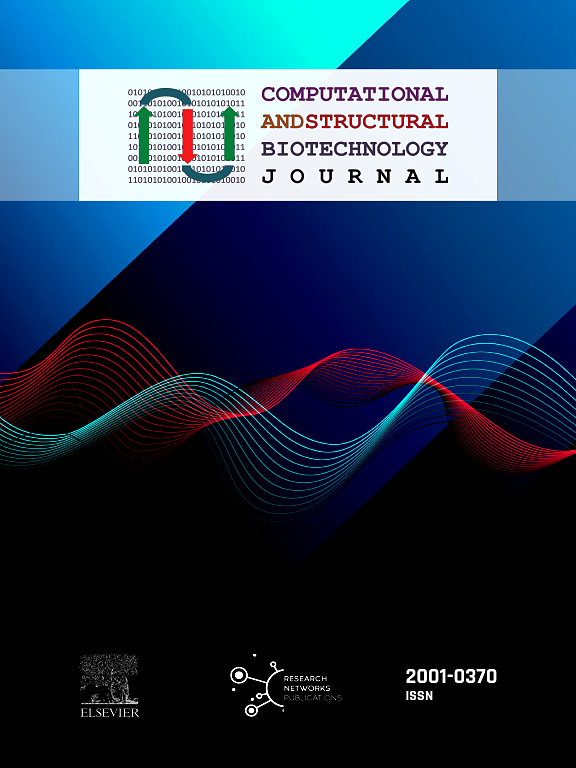Advancing titanium dioxide coated photocatalytic depolluting surfaces: Leveraging ASINA's roadmap for safer and sustainable solutions
IF 4.4
2区 生物学
Q2 BIOCHEMISTRY & MOLECULAR BIOLOGY
Computational and structural biotechnology journal
Pub Date : 2024-10-17
DOI:10.1016/j.csbj.2024.10.001
引用次数: 0
Abstract
This report, the second of its kind from ASINA project, aims at providing a roadmap with quantitative metrics for Safe(r) and (more) Sustainable by Design (SSbD) solutions for titanium dioxide (TiO2) nanomaterials (NMs). We begin with a brief description of ASINA’s methodology across the product lifecycle, highlighting the quantitative elements, such as the Key Performance Indicators (KPIs). We then propose a decision support tool for implementing SSbD objectives across various dimensions—functionality, cost, environment, and human health safety. This is followed by the main innovative findings, a consolidation of the technical processes involved, design rationales, experimental procedures, tools and models, used and developed, to deliver photocatalytic depolluting surfaces by spray- finishing techniques based on TiO2 NMs formulations. The roadmap is thoroughly described to inform similar projects through the integration of KPIs into SSbD methodologies, fostering data-driven decision-making. While specific results are beyond this report's scope, its primary aim is to demonstrate the roadmap (SSbD know-how) and promote SSbD-oriented innovation in nanotechnology. Finally, we provide a comparison of the approaches followed in two case studies that target different industrial sectors. This case-specific SSbD assessments provide a concrete exemplification of the addressed methodology that contributes to the efforts towards attaining a common roadmap for implementing SSbD solutions aligned with the EU’s Green Deal objectives.
推进二氧化钛涂层光催化污染表面:利用 ASINA 路线图实现更安全和可持续的解决方案
本报告是ASINA项目的第二份同类报告,旨在为二氧化钛(TiO2)纳米材料(NMs)的安全(r)和(更多)可持续设计(SSbD)解决方案提供量化指标路线图。我们首先简要介绍了ASINA贯穿产品生命周期的方法,并强调了量化要素,如关键绩效指标(KPI)。然后,我们提出了一种决策支持工具,用于在功能、成本、环境和人类健康安全等不同维度上实现 SSbD 目标。随后是主要的创新成果,综合了所涉及的技术流程、设计原理、实验程序、工具和模型,使用和开发了基于 TiO2 NMs 配方的喷涂表面处理技术来提供光催化去污染表面。通过将关键绩效指标整合到 SSbD 方法中,对路线图进行了详尽描述,为类似项目提供参考,促进数据驱动决策。虽然具体结果超出了本报告的范围,但其主要目的是展示路线图(SSbD 专门技术)并促进纳米技术中以 SSbD 为导向的创新。最后,我们对两个针对不同工业领域的案例研究中采用的方法进行了比较。这种针对具体案例的 SSbD 评估为所采用的方法提供了一个具体范例,有助于为实施与欧盟 "绿色交易 "目标相一致的 SSbD 解决方案制定共同路线图。
本文章由计算机程序翻译,如有差异,请以英文原文为准。
求助全文
约1分钟内获得全文
求助全文
来源期刊

Computational and structural biotechnology journal
Biochemistry, Genetics and Molecular Biology-Biophysics
CiteScore
9.30
自引率
3.30%
发文量
540
审稿时长
6 weeks
期刊介绍:
Computational and Structural Biotechnology Journal (CSBJ) is an online gold open access journal publishing research articles and reviews after full peer review. All articles are published, without barriers to access, immediately upon acceptance. The journal places a strong emphasis on functional and mechanistic understanding of how molecular components in a biological process work together through the application of computational methods. Structural data may provide such insights, but they are not a pre-requisite for publication in the journal. Specific areas of interest include, but are not limited to:
Structure and function of proteins, nucleic acids and other macromolecules
Structure and function of multi-component complexes
Protein folding, processing and degradation
Enzymology
Computational and structural studies of plant systems
Microbial Informatics
Genomics
Proteomics
Metabolomics
Algorithms and Hypothesis in Bioinformatics
Mathematical and Theoretical Biology
Computational Chemistry and Drug Discovery
Microscopy and Molecular Imaging
Nanotechnology
Systems and Synthetic Biology
 求助内容:
求助内容: 应助结果提醒方式:
应助结果提醒方式:


